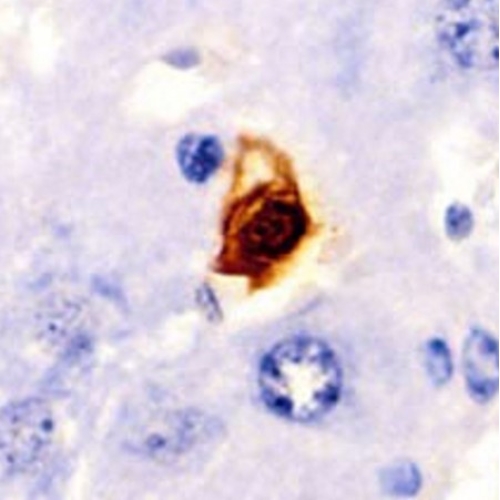As we age, our bodies undergo numerous changes, many of which impact our immune system's ability to fend off diseases like influenza. Aging is inevitable, but understanding its effects on our health can help us find better ways to protect ourselves, particularly in our golden years. One fascinating aspect of this natural aging process is cellular senescence, a state where cells cease to divide but don't die. While this process helps prevent cancer by stopping damaged cells from multiplying, it also has a darker side, especially when it comes to fighting infections.
What is Cellular Senescence?
Cellular senescence occurs when cells lose the ability to proliferate, entering a state of permanent dormancy. Initially, this serves as a protective mechanism, preventing the spread of potential cancerous cells. However, these senescent cells don't just disappear; they accumulate over time and begin to secrete various proteins and inflammatory factors that can affect the body in multiple ways. This secretion, known as the Senescence-Associated Secretory Phenotype (SASP), can either support or hinder our body's immune responses.
Cellular senescence is a complex biological process where cells permanently stop dividing but don't die off. This process plays a critical role in our bodies, particularly as we age. Let's break down this concept into more detail to understand its mechanisms and implications.
Loss of proliferative capacity
Cells enter a state of cellular senescence in response to various stressors or damage, such as DNA damage, oxidative stress, or activation of certain oncogenes (genes that can transform a cell into a cancerous cell if mutated or expressed at high levels). The primary function of this process is to prevent damaged or potentially harmful cells from proliferating. This is crucial because unchecked cell division could lead to tumor formation and cancer.
Permanent dormancy
Once cells become senescent, they remain in a state called permanent dormancy. This means they do not divide, but they also do not go through programmed cell death (apoptosis). Essentially, these cells are in a state of limbo where they are alive but no longer contributing to tissue renewal or growth. This permanency acts as a double-edged sword. On one side, it prevents the proliferation of potentially cancerous cells, but on the other, it means these cells accumulate over time.
Accumulation of senescent cells
As individuals age, the number of senescent cells in their bodies tends to increase. These cells are not cleared effectively by the immune system and thus accumulate, especially in tissues where cell turnover is low. This accumulation can lead to a gradual decline in tissue function and contributes to the aging process and the onset of age-related diseases.
Secretion of SASP factors
One of the most significant impacts of senescent cells comes from what they secrete. Senescent cells release a variety of molecules collectively known as the Senescence-Associated Secretory Phenotype (SASP). SASP includes inflammatory cytokines, growth factors, proteases, and other signaling molecules. The composition of SASP can vary depending on the cell type and the trigger that induced senescence.
Double-edged sword in fight against influenza
In the study of aging and its effects on the immune system, researchers have turned their attention to the role of senescent cells, especially in the context of infections like influenza. Influenza is particularly risky for older adults because their immune systems have often deteriorated, a process known as immunosenescence. Senescent cells, which increase in number as we age, play a significant part in this decline.
A recent study explored how senescent cells influence the immune response to influenza infections in aged mice. The presence of senescent cells in aging populations has been linked to various age-related diseases, but their role in infectious diseases has also become a major focus of gerontological research. Senescent cells can affect the body's response to pathogens through their secretions- SASP.
The key findings of the research were two-fold:
Enhanced Viral Clearance
The researchers found that removing senescent cells in aged mice could enhance their ability to clear the influenza virus more effectively. This is likely because the removal of senescent cells reduces the overall inflammatory environment caused by the SASP factors. Lower levels of chronic inflammation may allow the immune system to function more efficiently, focusing its efforts on fighting the virus rather than dealing with the effects of widespread inflammation.
Reduced Antibody Production
Despite the improved initial response, there was a significant downside. The clearance of senescent cells also reduced the mice’s ability to produce antibodies in the lungs, which are crucial for long-term immunity against the virus. Antibodies are protein molecules produced by the immune system that specifically recognize and bind to foreign objects like viruses, marking them for destruction and preventing their spread. The presence of antibodies in the lungs is especially important for respiratory pathogens like influenza.
The study’s findings highlight a complex balance between the immediate and long-term immune responses. While initially, the immune system's ability to clear the virus improved, the long-term immunity was compromised. This suggests that while senescent cells contribute to a deleterious pro-inflammatory environment, they may also play a role in the development of immunological memory.
One possible explanation for this phenomenon is that certain components of the SASP, while generally promoting inflammation, may also be necessary for the activation and function of memory B cells and plasma cells that produce antibodies. These cells need specific signals to thrive and produce antibodies, and some of these signals might be found within the mix of factors secreted by senescent cells.
Balancing benefits and drawbacks
The study underscores the importance of senescent cells in regulating immune responses in the elderly, suggesting that therapeutic strategies aimed at treating infections in older adults need to consider both the beneficial and harmful aspects of senescent cells. Simply removing these cells may improve immediate defense mechanisms against pathogens but could undermine the body's ability to develop long-lasting immunity, making individuals susceptible to future infections.
These insights open new doors for potential treatments aimed at improving immune function in the elderly. Senolytics, drugs designed to target and clear senescent cells, are already being considered for treating age-related diseases. However, this study underscores the need for a balanced approach. Completely removing senescent cells might boost immediate immune responses but could also weaken the body's long-term defenses against viruses.
A delicate balance
The study on cellular senescence and influenza in aged mice highlights the complex role of senescent cells in aging and disease. It serves as a reminder that in biology, interventions often come with trade-offs. As we advance in our understanding and develop treatments targeting these aging cells, we must carefully consider both the benefits and the potential risks. The goal isn't just to extend life but to enhance the quality of life, ensuring that our immune system can robustly defend us throughout our years.
As research continues, it's an exciting time for science and medicine, as we uncover more about how our bodies age and how we can potentially turn back the clock on certain aspects of aging. Engaging with these findings not only helps us appreciate the complexities of our bodies but also guides us in making informed decisions about our health as we age.
The study was led by Professor Laura Haynes at the University of Connecticut. It was published in Aging Cell.






